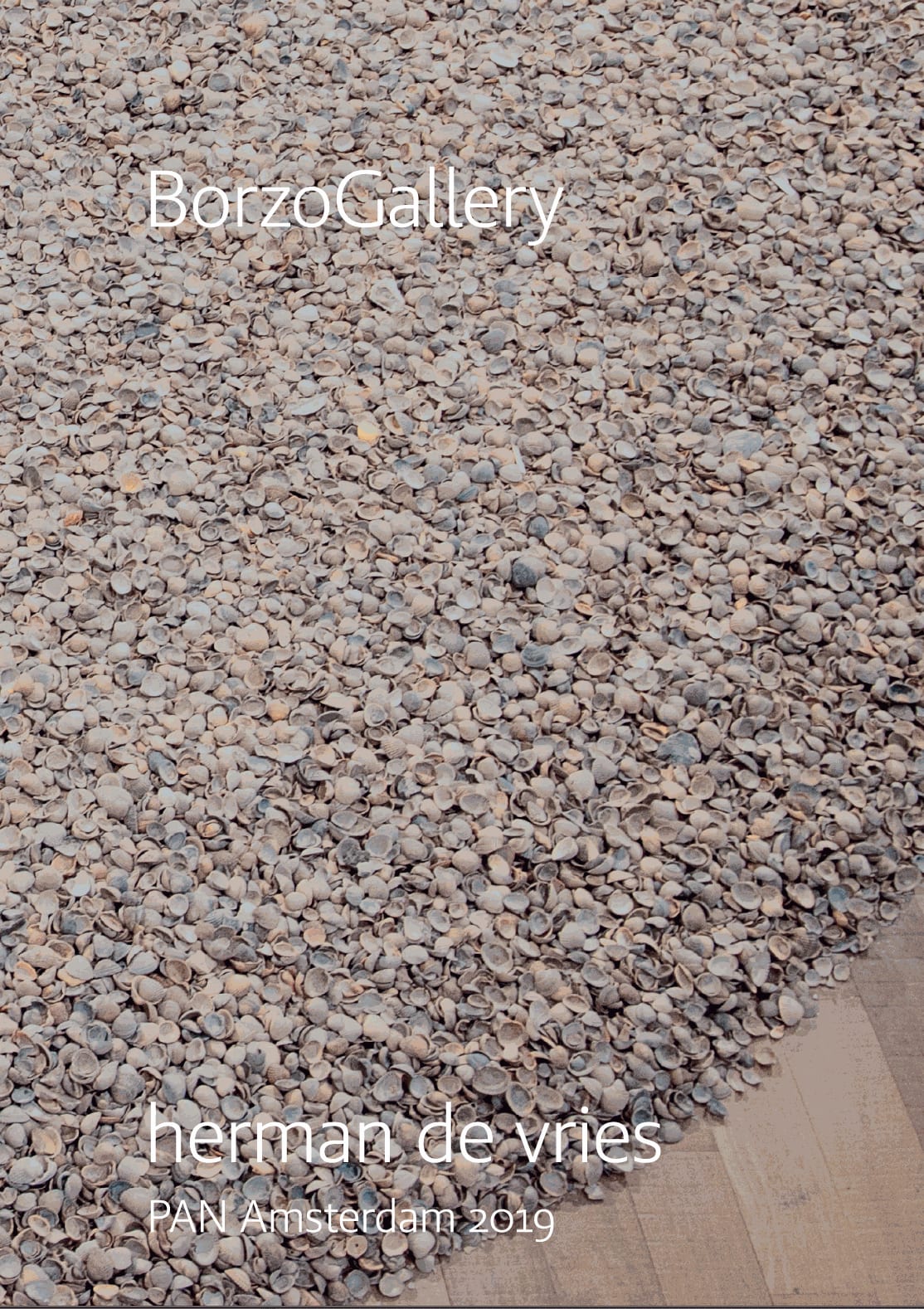PAN Amsterdam 2019: Stand 37
I have always been a zero artist, herman de vries tells us during our conversation on a return visit to his house and studio in Frankenland, Germany. In the early nineteen-sixties herman de vries is one of those at the foundation of this movement, which arises from the need felt by groups of artists to give art a kick-start, to return to zero...
To take a step back from what they see as the dead end street of painting, the paint, the colour, the emotion, which reigns supreme in post-war Europe. herman de vries has always taken this 'mission' quite literally. One of his philosophical positions has always been to make his role as artist as small as possible and thereby eliminate, for as far as possible, the rationale.
The white sculptures and reliefs from the nineteen-sixties and seventies are not composed based on a personal idea or emotion, but emerge by chance, at random. The composition of a relief, drawing or collage is defined by a series of arbitrary numbers or by the gravity that allocates the position of the blocks, rods or leaves on a panel or the paper.
Since the nineteen-seventies it is nature that has played the crucial role in the artistic life of de vries. After all, a trained botanist and now living in Germany on the edge of the huge Steigerwald, the countryside lies literally at his feet and at his fingertips. Based on the same 'at random' principle of arrangement by chance, works have since emerged whereby his role as artist remains confined to the observation, discovery, collection, arrangement and documentation of everything that nature places at his disposal. Falling leaves, twigs, seeds, stones, soil and 'objets trouvés' lie everywhere around the artist or are presented - sometimes literally - to him. The craft is limited to arrangement, fixing and documentation. In a philosophical sense de vries sees this as the maximum extent of his role as artist. Each object that nature hands to him is of equal value and in the hands of this artist becomes art. There is no distinction as to value, no hierarchy (this is also where his wish stems to avoid the use of capitals, even in his name).
Drawing is something herman de vries has done all his life, this skill has remained, now as part of his specific artistic expertise. I prefer drawing in the evening, when I'm tired. It is at times like these that de vries finds it easiest to empty his head, so that tiredness hampers and thereby avoids rationale or any systematic action. The endless repetition of a similar pattern, of a single word or series of words (a truly zero/nul point of departure!) is then a sort of Zen act, that his hand carries out virtually automatically, all thought switched off. Even more rigid in his oeuvre - and making use of what nature places at his disposal - are his charcoal drawings.
In 'his' Steigerwald he finds wood and charcoal, left behind at barbecue sites. For him this then makes it a tool for drawing, in the evening, tired and with only his hand as the autonomous instrument that creates the drawing. In just one or two fast, impulsive and powerful movements. He thus also collects 'earth samples' from all over the world. In the studio these mostly multi-coloured samples are finely ground in order to be then rubbed onto a sheet of paper using the fingers to create monochrome 'earth rubbings', as if they were portraits, registrations of the earth on location.
For decades herman de vries has been an artist with a strong international orientation and reputation. Even more international focus was drawn to his remarkable skills as an artist during the Venice Biennale 2015, where the entire Dutch pavilion was devoted to his work. More recent is the exhibition 'voor jullie voeten' (at your feet) in his home town of Alkmaar. herman has expressed his wish that the shell floor shown there will be reproduced in a slightly modified form at PAN Amsterdam.
(parts of this introduction were published earlier for the exhibition 'ultimate free' by herman de vries at Borzo, 2018, BorzoNews #63)












